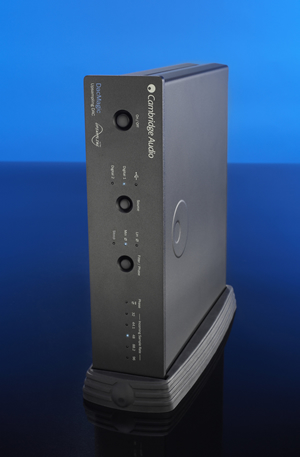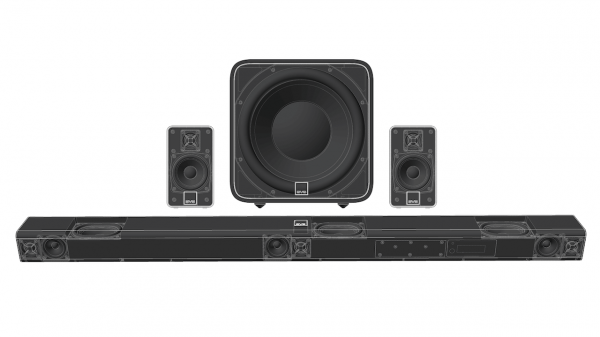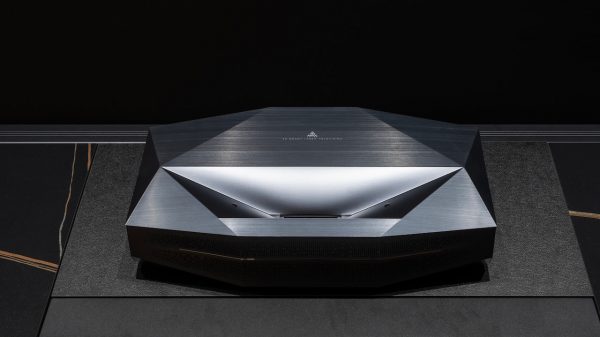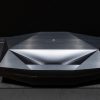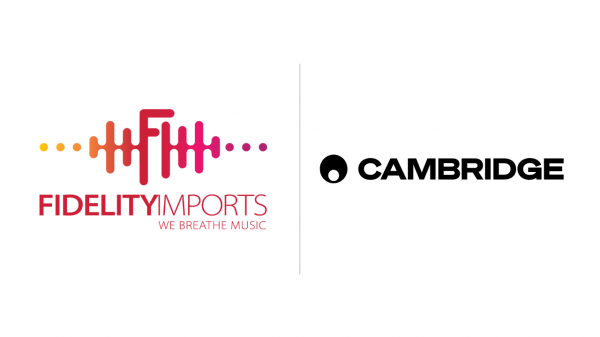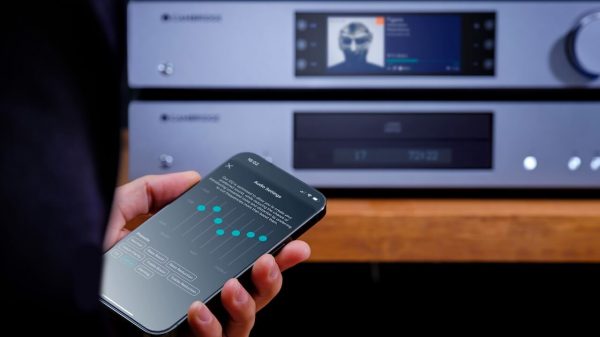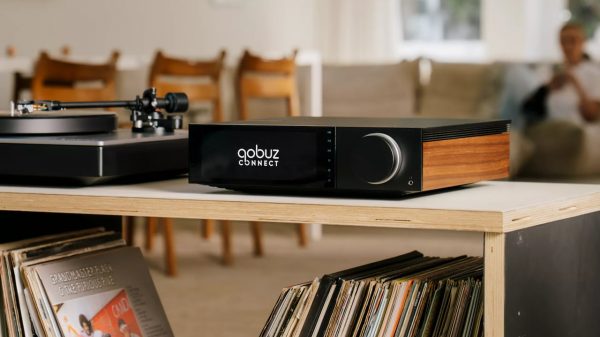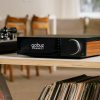Expected October 2008
With the advent of computer-based music systems, Cambridge Audio’s DacMagic upsampling digital to analogue converter is the most affordable and effective way to upgrade any PC, network music device, games console or standard CD/DVD player to truly high end sound quality.
This incredible device dramatically improves sound quality to enable the digital music generation and gaming fanatics to appreciate their collection immediately in a totally new light. Cambridge Audio has a passion for faithfully reproducing music as those in the recording studio intended and with the DacMagic, the company has once again set a new benchmark for audiophile excellence at a more than affordable price. DacMagic is expected to take the market by storm.
The DacMagic has a variety of simple connections including S/PDIF, Toslink and USB inputs which mean it can be used to improve a wide range of devices with digital outputs such as soundcards, portable media player docks or networked music devices including sound bridges. Twin Wolfson DACs provide outstanding stereo imaging while a choice of digital filters is available for individual preference and flexibility. Key to its abilities is Adapted Time Filtering (ATF) upsampling technology developed in conjunction with Anagram Technologies of Switzerland which converts 16-24 bit audio data to 24 bit/192kHz dramatically improving musical reproduction. A 32 bit Digital Signal Processor (DSP) eradicates jitter which is especially effective with hard disk playback from PCs.
Key features:
- Two inputs with both S/PDIF & Toslink sockets allow a wide range of digital sources to be connected such as network music devices, games consoles, CD/DVD players and other digital music devices
- USB input connects direct to PC without drivers to act as a very high quality DAC/soundcard providing genuine hi-fi quality playback from desktop or Windows Media Center PCs
- Adapted Time Filtering (ATF™) asynchronous upsampling technology converts 16-24 bit audio (at any standard sampling frequency between 32-96kHz) to 24 bit/192kHz
- 32 bit Texas Instruments Digital Signal Processor (DSP)
- Dual Differential Virtual Earth balanced filter topology — low order two pole linear-phased Bessel filter takes advantage of high sampling rate achieved
- Twin Wolfson WM8740 high quality DACs in dual differential mode for excellent stereo imaging
- Incoming sampling rate indicator 32 / 44.1 / 48 / 88.2 / 96kHz
- Choice of filters — linear phase, minimum phase and steep filter can all be selected to suit an individual’s listening preferences
- Phase select to invert or reinvert input, correcting possible recording problems
- Singled ended phono and XLR balanced audio outputs
- Digital output (S/PDIF and Toslink concurrently) passes through selected source for recording purposes
- Substantial aluminium front panel plus an entirely new ultra rigid, acoustically dampened chassis
- Can be used vertically (custom designed stand supplied) or horizontally
- Available in silver or black
Cambridge Audio introduced the original DacMagic in 1994 with the specific intention of upgrading CD players. It was received to great acclaim and spawned several incarnations. The digital music revolution means the CD is just one format as people listen to their collection in a totally different way. Therefore, the time is right for a renaissance. The spiritual successor to the original DacMagic allows a range of applications such as PCs, Media Center PCs, network music devices and sound bridges to benefit from a DAC’s ability to bring downloaded and compressed content to life. By connecting to games consoles including PlayStations (PS2 and PS3)™ Xbox and Xbox 360s™, a new dimension can be given to gaming via dramatically improved soundtracks and special effects. Similarly, many consumers with an interest in home cinema use a DVD player for both movies and music but may find CD playback to be lacking somewhat. In this respect the DacMagic is the ideal way to improve a DVD player’s sonic performance. All these products can be connected concurrently via USB, S/PDIF and Toslink. Once upsampled, the DacMagic offers both unbalanced RCA and balanced XLR outputs for the best quality analogue transfer.
For those that wish to read about the key technologies involved, the next section continues with greater technical detail.
Adapted Time Filtering (ATF), developed in conjunction with Anagram Technologies, Switzerland, intelligently interpolates standard definition 16 bit CD or USB audio to 24 bit/192kHz via a new 32 bit Texas Instruments Digital Signal Processor (DSP) to reveal unparalled levels of detail. Unlike other products based on standard sample rate converters which effectively just draw a straight line ‘between the dots’, the DacMagic employs a process that involves a proprietary polynomial curve fitting algorithm which ensures that the interpolated data smoothly fits between the original data points. A time domain model adaptively generates the new data in the temporal domain dramatically reducing digital jitter; even that present in the input audio. This is especially effective when used with PCs or network music players where audio jitter introduced by hard-disk playback, USB links or Ethernet can be radically reduced.
Each high quality Wolfson WM8740 DAC handles just one channel for excellent stereo imaging, operating fully in differential mode for exceptionally low distortion and noise. Fully differential anti-aliasing filters based on a Bessel linear phase topology, which feature flat group delay characteristics, provide amazing timing.
The DacMagic’s 32 bit DSP runs Cambridge Audio’s own proprietary digital filter algorithms with three different filter options available: Linear Phase, Minimum Phase and Steep. Controlled from one switch on the front panel, they are extremely clever audiophile topologies specifically developed for audio playback and all offer excellent sound quality but differ slightly to appeal to a wide range of listening tastes.
Linear phase is the same as used in the flagship Azur 840C upsampling CD player. It uniquely features ‘constant group delay’ which delays all audio signals at all frequencies by the same amount meaning all audio is fully time-coherent at the output.
Minimum phase meanwhile does not feature constant group delay but rather the co-efficients have been optimized without feed-forward so that the impulse response exhibits no pre-ringing in the time domain. Some commentators have argued that the pre-ringing as seen in nearly all digital filter designs may affect the transient attack of percussive instruments. Minimum phase implementation eliminates this and is a technology only seen previously in some extremely high-end CD playback systems.
Lastly, the steep filter removes close in aliasing artefacts by re-calibrating the co-efficients for a very slight roll off at 20kHz but an ultra steep drop to the stop-band just after 20kHz.
These three filters are all of the highest quality but offer subtle differences for the user to enjoy. The type of filter chosen is remembered for each input individually so that it is possible to use one for PC playback via USB and another for CD playback via SPDIF.
As with all Cambridge Audio products, the foundation of the DacMagic’s performance is a bespoke chassis. The result is an ultra rigid, low resonance, acoustically dampened platform for the electronics to sit in which enable it be positioned vertically (using the supplied stand) or horizontally.
